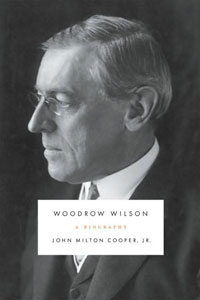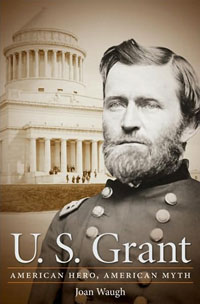The Dustbin of History

That portion of the human community that self-assigns itself the task of reminding all of us the lowly values of the human species and regularly intones and scolds “I told you so” with every disaster, natural or manmade (its obvious we can include that disingenuous popinjay, Pat Robertson) is a useless choir I identify as know-nothing cynics. (If I remember correctly, this Greek appellation had something to do with dogs, which I believe is an insult to the canine species.) These hounds have been howling with delight especially in view of recent events in the benighted commonwealth of Massachusetts and there seems to be a twisted schadenfruede that yet another obstructionist opportunist has gained a seat in the millionaire’s club known as the Senate.
I don’t think it is that much of a stretch (of course, I wouldn’t) to consider two recent presidential biographies, UCLA’s Joan Waugh’s U. S. Grant: American Hero, American Myth (University of North Carolina Press)and Woodrow Wilson: A Biography (Knopf) by John Milton Cooper, Jr., to show the vagaries of presidential history and the rising and falling stock of presidential reputations. Though the volatile nature of political popularity is not news, the compacting of the timeframe from savior to demon is especially disconcerting. Wasn’t it just a year ago that Barack Obama’s inauguration ushered in an era of—uh, what was it exactly?
But that’s another story for another day.
In the last C-Span President’s Day poll, the highest three spots unsurprisingly belonged to Lincoln, Washington, and Franklin Roosevelt—yet both Grant and Wilson were immensely popular and lionized in their day, and of course these books explain their fallen stock. As a lapsed historian I have the interest but not the scholastic rigor and temperament to explicate these two works (not to mention the short attention span I share with you). Which is why I direct your attention toward two useful and informed critiques, one by Princeton historian Sean Willentz, the other by Yale mentor Beverly Gage. On Wilson scholar Copper’s “definitive” biography, Gage comments:
As Cooper describes him, Wilson was a warm, witty family man with a talent for political hardball and a scholar’s love of big ideas: “Behind Woodrow Wilson’s distinctive and often caricatured features—his long nose, big jaw and pince-nez eyeglasses—lay one of the deepest and most daring souls ever to inhabit the White House.
Such statements set the tone for Cooper’s book, an admiring and engaging work of presidential revisionism. According to Cooper, Wilson was a savvy executive whose farsighted decision-making shaped “much of what has happened in the world since.”
And Gage concludes:
It makes sense that Cooper wants to see the best of Wilson; few historians dedicate a life’s work to figures they roundly despise. A more nuanced approach might have let Wilson stand on his own contradictory terms. Yet this is a luxury not always afforded presidential historians, who must inevitably address how their subjects stack up against the competition.

When Ulysses Grant died he was the most famous person in America, revered and placed in the American pantheon with Lincoln and Washington. Remember Grant’s tomb? Willentz points out: “The decline of Grant’s tomb from a popular shrine through the 1920s into a nearly forgotten, seedy, even dangerous refuge for homeless junkies 50 years later becomes a fitting symbol.”
More on point, Willentz observes Grant was:
A superb modern general who, with Lincoln, finally unleashed the force required to crush the slaveholders’ rebellion, Grant went on, as president, to press vigorously for the reunification of the severed nation, but on the terms of the victorious North and not of the defeated South. Given all that he was up against—not simply from Confederates and Southern white terrorists but, as president, from high-minded factional opponents and schismatics from his own Republican Party—it is quite remarkable that Grant sustained his commitment to the freedmen for as long and as hard as he did…
Notably, Willentz’s essay has the luxury of space for a more detailed historiographic explanation for Grant’s fall from favor, laying much at the pens of “the rising racist, pro-Southern, so-called ‘revisionist,’ or ‘Lost Cause’ school of American historians, pioneered at the turn of the century by William Dunning of Columbia University, [that] portrayed Grant as a sociopathic killer during the war and a tyrant during Reconstruction.”
Whether you have a stake in these historical sweepstakes or are confounded by the widespread displays of infantile political posturing and pundits braying, an occasional sober look at American history does have the benefit of placing the current social frenzy in a context that makes it less dire. Maybe.
